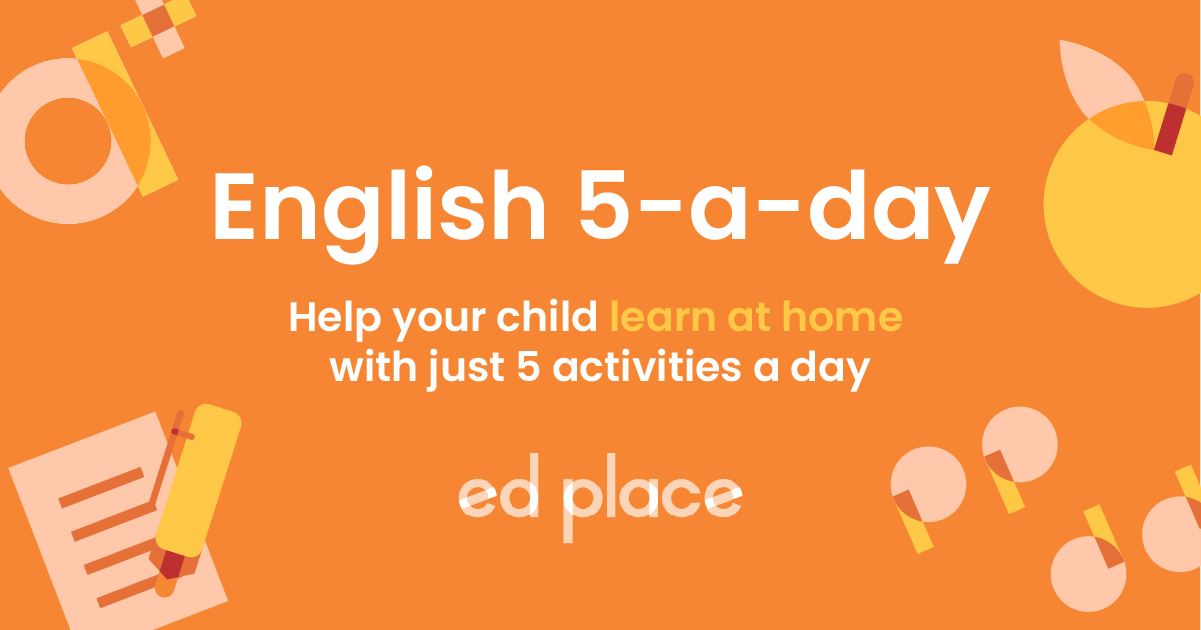
EdPlace's Year 6 Home Learning English Lesson: How To Retrieve Information from a Text
Looking for short lessons to keep your child engaged and learning? Our experienced team of teachers have created English, maths and science lessons for the home, so your child can learn no matter where they are. And, as all activities are self-marked, you really can encourage your child to be an independent learner.
Get them started on the lesson below and then jump into our teacher-created activities to practice what they've learnt. We've recommended five to ensure they feel secure in their knowledge - 5-a-day helps keeps the learning loss at bay (or so we think!).
Are they keen to start practising straight away? Head to the bottom of the page to find the activities.
Now...onto the lesson!
Retrieving Relevant Information - Spot It and Write It Down!
Reading comprehension is an umbrella term that covers a variety of different skills. It’s not just about being able to read a text. Children need to be able to summarise the text in their own words, pick out appropriate vocabulary, define the meaning of words, infer what the author means, think about the author’s purpose and why they have written it, predict what might happen next and pick out information from the text. Phew!
A lot is asked of children in reading comprehension questions and each skill needs to be taught independently. However, most children will practice these skills without even knowing it! Reading a book and then talking about with a family member is a comprehension skill, or comparing it to another book they have read. Both are great skills to have and demonstrate an awareness of what a child is reading. In this article, we will focus on information retrieval. This is one of the more straight-forward skills and allows children to pick up simple marks when completing a test.
We're confident that if you follow the steps outlined below your child will be able to:
1) Recognise what a retrieval question looks like
2) Understand how to efficiently and accurately retrieve relevant information from a text
3) Apply this knowledge to complete 5 EdPlace retrieval activities
Step 1 - Robust Retrieval!
Retrieval questions are only ever going to ask children about what is already in the text. They are simply asking for children to pull out the relevant information and write it down as their answer, hence the word ‘retrieval’. Students do not need to have any prior knowledge of the subject matter. Retrieval questions come in different forms and will often begin with: who, what, where, when, why or how. When answering a retrieval question, the answer may be relatively easy to find, it may have already have been highlighted or, it may require a little more search.
Below are 3 top tips for students when answering retrieval questions:
1) Use text marking! When reading a new text lookout for specific names, places, dates, years as these are likely to come in handy later...
2) If a retrieval question begins with 'who' you know you're looking for a name. If it begins with 'where' you're looking for a placename. Use the question narrow down the type of information you are looking for.
3) Do not guess! It can be tempting to guess when answering this type of question but always look back to the text and check your answer is accurate and relates to the question being asked of you
3) A retrieval question could begin with 'who' indicating it is asking for a person. Or 'where' meaning it is asking for a place etc.
Don't be fooled into thinking that all retrieval questions are literal and easy to answer. Usually, you will have to look in detail at the text to find the answer.
Step 2 - Scanning and Skimming
One thing students sometimes forget is that retrieval questions are often asked in the order of the text. The first question will refer to the first paragraph, the second question will refer to the second paragraph and so on. Therefore, remind your child not to waste time looking in every paragraph if it's only the first question; the information will be right at the top in the first couple of sentences! This also means that if they're answering question 8 out of 10, they can scan the first couple of paragraphs safely!
There are two techniques children can use to find the relevant information in a text quickly. Skimming is used to get the gist or general idea of a text quickly. Instead of reading every word, they might look at features such as the title, subheadings or pictures to gain a general idea of what a text is about. Instead of reading the whole of each paragraph they can just read the first and last sentences, or pick out keywords as you go along. This skill can take a while to master but will be a great help to them if they can.
Scanning is a way of looking for specific information in a text. For example, your child may be learning about King Henry VIII and want to know the date he became king. This will be shown as a number rather than a word, so instead of reading the whole text, they can move their eyes quickly across the words until they find a number. As with skimming, it's useful to make use of titles and subheadings to help them look in the correct part of the text. It's also worth thinking about the features of the word they're looking for. When looking for the name of a person, children can scan the text for words starting with capital letters, as these tend to stand out, or look for words beginning with the letter they're looking for.
Step 3 - Accurate Retrieval
Once you've found the information you are looking for, you need to write it down exactly as it says in the text. Don’t paraphrase or misquote the information, it needs to be exactly what is written. A useful tip is to note that dates and names are often popular retrieval answers, as they can be easily lifted from the text. So keep your eyes peeled for these! For example: if a question asks you 'How does the speaker feel about the weather?' The answer cannot be paraphrased as 'The speaker does not like the wind'. It must be accurate, 'The speaker is frightened of the wind'.
Step 4 - Put Your Skills to the Test!
Now it's time to attempt some questions, only using the information from the text and not your prior knowledge. You may read a text and know a lot about the subject, but if what you know isn’t featured, don’t write it down! Reading comprehension does not test your knowledge about a subject, it tests your ability to find information and write it down accurately. It is reading skills that are being put to test, not general knowledge. Now, let’s have a go at answering some retrieval questions using a paragraph written about the Maya civilisation, a fantastic topic usually covered in Years 5 or 6.
The ancient Maya civilisation began over 2000 years ago in the Central America region. The Maya were very clever and came up with their own calendar system, as well as constructing impressive monuments and buildings. When the Spanish arrived in the 16th century, they dismantled the Maya’s way of life and their cities were destroyed.
1) When did the Maya civilisation begin?
2) Name one thing that the Maya people invented.
3) Who destroyed the Maya’s cities?
4) Come up with a synonym for ‘clever’ to describe the Mayans.
Step 5 - Want to Really Consolidate Your Understanding?
We hope your child is feeling more confident with punctuating direct speech! If so, now is the perfect time for you to put them to the test. Here are some activities which will help to consolidate their learning. We recommend doing them in this order so that the learning builds progressively.
All activities are created by teachers and automatically marked. Plus, with an EdPlace subscription, we can automatically progress your child at a level that's right for them. Sending you progress reports along the way so you can track and measure progress, together - brilliant!
Activity 1 - Examples of Retrieval Style Questions
Activity 2 - Understand Retrieval Style Questions
Activity 3 - Summarise Ideas in a Paragraph
Activity 4 - Skimming and Scanning: Skills Required
Activity 4 - Reading Comprehension Assessment
Answers
1) Over 2000 years ago
2) A calendar system
3) The Spanish invaders
4) Synonyms for clever include: ingenious, astute, wily and shrewd.
Keep going! Looking for more activities, different subjects or year groups?
Click the button below to view the EdPlace English, maths, science and 11+ activity library








